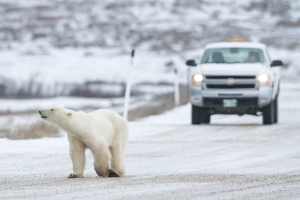Hell hath no fury like a determined woodpecker. Not even a plastic owl was able to scare away a northern flicker that was pecking holes into the world’s largest hockey stick in Duncan, B.C.
After spotting the hard-working bird and determining there were no nests, staff at the Cowichan Community Centre patched over the hole in an attempt to prevent any further damage. For the flicker, this was little more than an inconvenience, as it dutifully returned to peck a new hole in the Vancouver Island landmark.
Described as “an important community asset” by Lori Iannidinardo, chair of the Cowichan Valley Regional District, the giant hockey stick now has not one, but two holes.
The northern flicker, native to North America, can usually be found on the ground where it digs for food like ants and beetles. This doesn’t mean it is unable to climb up tree trunks like other woodpeckers — flickers generally nest in holes in trees that they have pecked themselves, but might sometimes nest in old, earthen burrows vacated by other ground-dwelling birds.
One explanation for this flicker’s hockey stick drilling could be that flickers, like most woodpeckers, often use drumming (the sound of their pecking) as a way to communicate or for territorial defence. It can be argued that this flicker just wanted to keep Duncan’s giant hockey stick all to itself — or to send a message out to its other woodpecker friends.
Either way, it seems as though this bird isn’t going anywhere anytime soon. For Iannidinardo and the community centre’s staff that means “a whole lot of patching” lies ahead.








